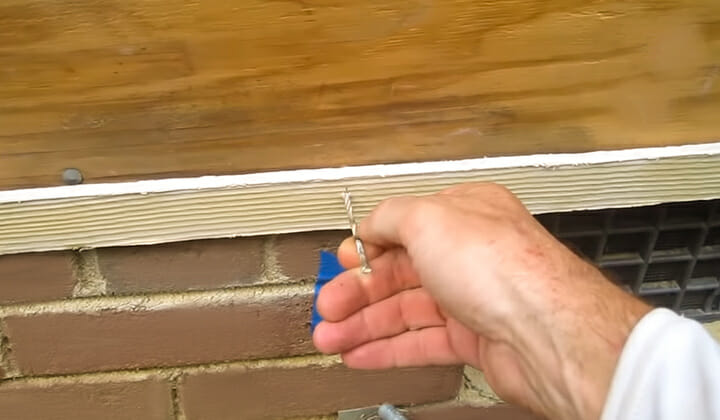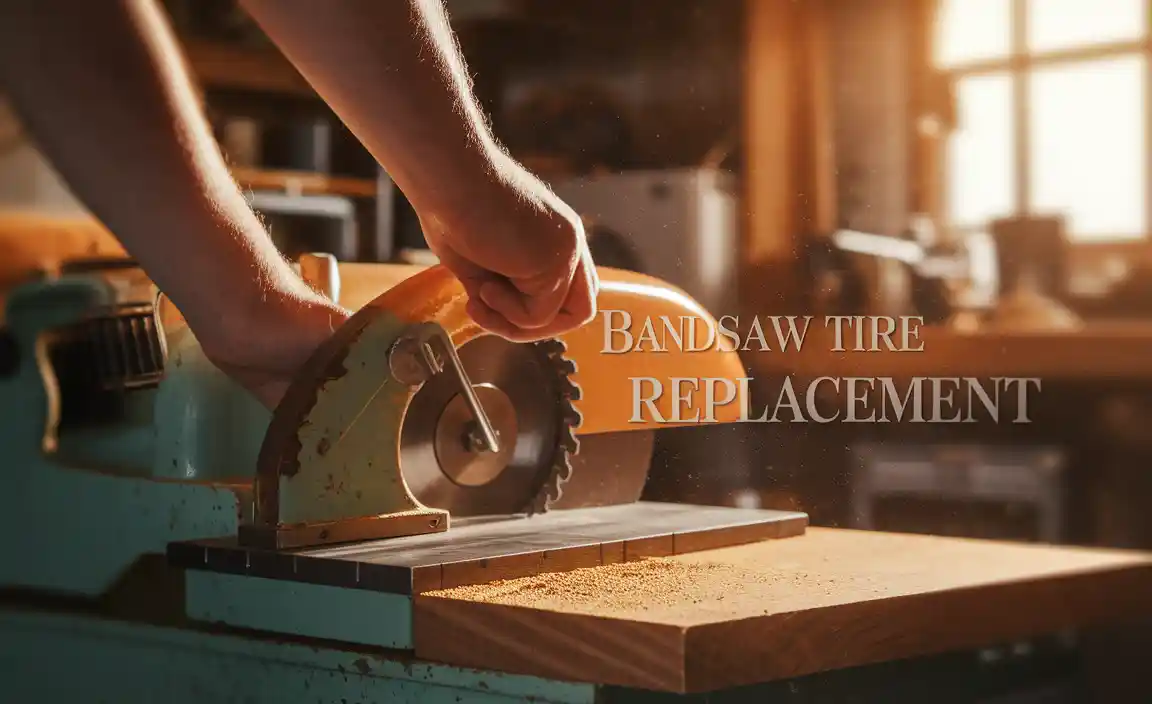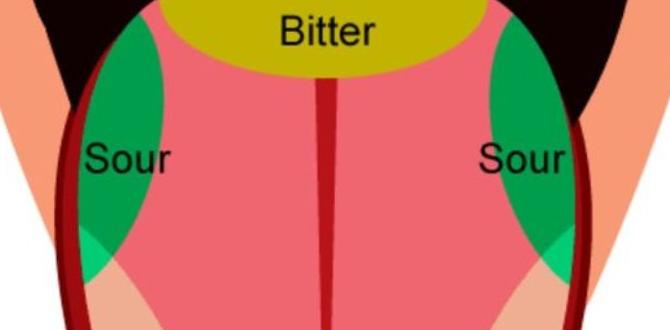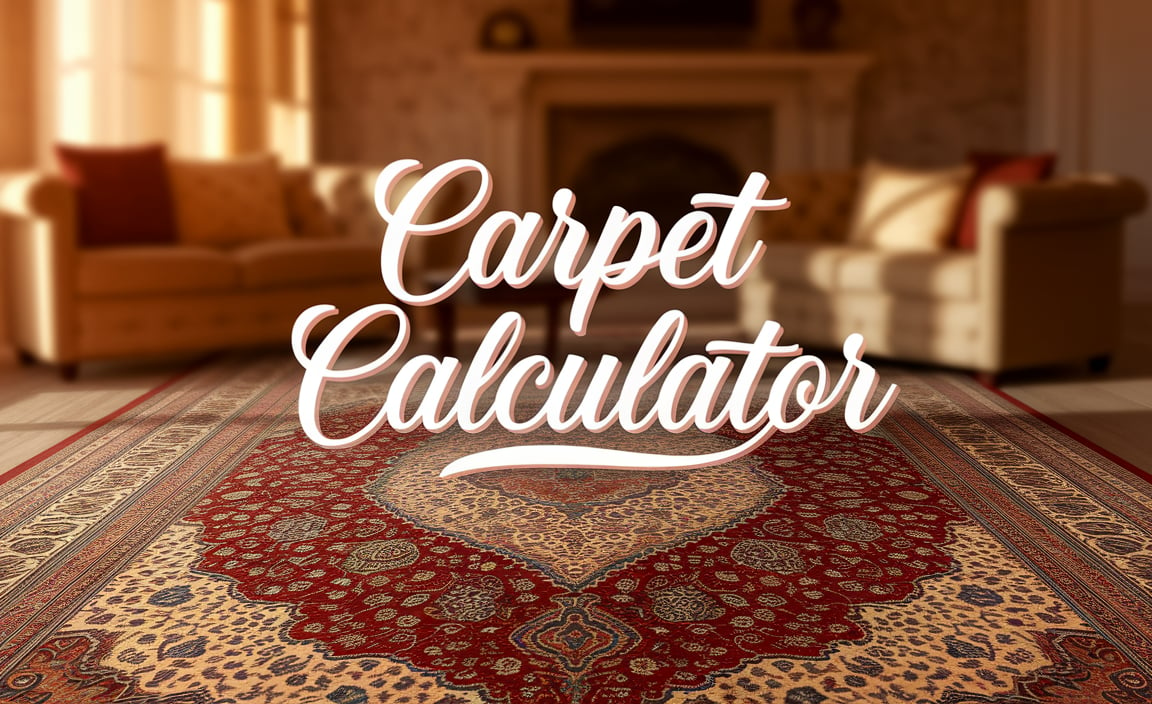Using a brad nailer for upholstery is a game-changer for DIYers. It speeds up your work, holds fabric securely, and gives a professional finish to your furniture projects. This guide shows you exactly how to do it safely and effectively.
Tired of struggling with upholstery staples? It can be a slow, tiring process that often leaves you with sore hands and less-than-perfect results. You’ve got big dreams for your furniture, maybe a comfy new armchair or a classic headboard, but the thought of all those tiny staples makes you hesitate. What if there was a much faster, easier, and more professional way to get that fabric looking just right? Well, there is! A brad nailer, often seen as a woodworking staple, is surprisingly fantastic for upholstery. We’ll walk you through everything you need to know to use one confidently for your next project, making upholstery less of a chore and more of a joy.
Table of Contents
Why a Brad Nailer is Your Upholstery Secret Weapon
When you think of upholstery tools, your mind probably goes to staple guns, tack strips, and maybe a trusty hammer. But a brad nailer? It might sound a little unconventional at first, but trust me, it’s an absolute game-changer for fabric work. It’s not just about speed; it’s about a cleaner, stronger hold and a more professional finish that’ll make your projects shine.
Speed and Efficiency: Get More Done, Faster
The biggest win with a brad nailer is the sheer speed it offers. Instead of manually firing staple after staple, a brad nailer drives nails in a fraction of a second. This means you can attach fabric to chairs, ottomans, headboards, and more in a significantly shorter amount of time. For larger projects, this efficiency boost is invaluable. You’ll spend less time on the tedious parts and more time admiring your handiwork!
Precision and Control: The Sweet Spot for Fabric
Brad nailers are designed to drive small, thin nails (brads) with great precision. This is perfect for upholstery because you need to secure fabric without damaging it. The nails are typically much smaller than staples. This minimizes the chance of the nail head tearing through the fabric, especially on delicate materials. Plus, you can get them into tight spots and curves with ease, achieving a smooth, wrinkle-free finish.
Stronger Holds: Less Worry About Loose Fabric
While staples can sometimes come loose over time, brads, when used correctly, provide a very secure hold. Their depth can be adjusted on most models, allowing you to drive them just deep enough into the wood frame to grip the fabric firmly without going too far. This means your upholstery work will look better for longer, with less risk of sagging or pulling away.
Versatility for Various Projects
From simple seat cushions to elaborate headboards, a brad nailer can handle a wide range of upholstery tasks. You’ll find it essential for:
- Attaching fabric to chair seats and backs
- Securing fabric around the edges of cushions
- Creating pleated or gathered effects
- Attaching decorative trim or welting
- Building frames for custom-made upholstered pieces
Choosing the Right Brad Nailer for Upholstery
Not all brad nailers are created equal, and the right one can make all the difference. For upholstery, you’ll generally want a lighter, more maneuverable tool. Here’s what to look for:
Nail Size and Gauge Matters
Brad nailers use nails of different gauges (thickness). For upholstery, you’ll typically want a 18-gauge brad nailer. These use very thin nails, often called “brad” nails, which are discreet and less likely to damage fabric. You might also find tools called “finish nailers” that are similar, but 18-gauge brad nailers are the sweet spot for most upholstery needs. The length of the nails is also important – usually, 1” to 1 ½” nails are sufficient for upholstery work on most furniture frames.
Power Source: Cordless vs. Pneumatic
Your choice of power source affects portability and ease of use:
- Pneumatic (Air-Powered):</strong
- Pros: Often more powerful, lighter tool itself, generally less expensive upfront.
- Cons: Requires an air compressor, hose, and potentially an oiler, which can be cumbersome.
- Cordless (Battery-Powered):
- Pros: Maximum portability, no hoses or compressors needed, great for working in various locations.
- Cons: Tool can be heavier due to the battery, battery life is a consideration, can be more expensive initially.
- Electric (Corded):
- Pros: Consistent power, no need for batteries or air, lighter than cordless.
- Cons: Tied to an electrical outlet, cord can get in the way.
For upholstery, especially if you’re moving around a piece of furniture, a cordless brad nailer is often the preferred choice for its freedom of movement. However, a lightweight pneumatic model can also work well if you have the setup.
Features to Consider
- Depth Adjustment: Crucial for controlling how deep the nail penetrates the wood.
- Nose Piece: A non-marring tip is essential to prevent damaging your fabric as you nail.
- Jam Release: Makes clearing nail jams quick and easy.
- Lightweight Design: For comfortable use during long upholstery sessions.
Safety First: Essential Precautions
Using any power tool comes with responsibilities, and a brad nailer is no exception. Safety should always be your top priority to ensure you have a positive experience and avoid injuries.
Always Wear Safety Glasses
This is non-negotiable. Flying debris, even a tiny piece of wood or metal, can cause serious eye injury. Ensure your safety glasses meet OSHA standards; you can learn more about the importance of eye protection from the Occupational Safety and Health Administration website, which offers extensive resources on workplace safety.
Understand Your Nailer’s Operation
Read the manual for your specific brad nailer. Understand how it loads, how to clear jams, and importantly, its firing mechanism. Most brad nailers have a safety contact tip (or nose) that must be pressed against the surface before the nail will fire. This prevents accidental firing.
Keep Fingers Away from the Nose
It sounds obvious, but it’s easy to get careless. Never place your fingers in front of the nail exit point or near the firing mechanism. When not in use, disconnect the power source (air hose or battery) and engage the safety lock if your tool has one.
Work in a Well-Ventilated Area
If you’re using a pneumatic brad nailer, the air compressor can be noisy. Ensure you’re in a space with good airflow, especially if you’re working with new upholstery foam or adhesives. OSHA also provides guidelines on noise exposure, highlighting why ventilation and hearing protection are important.
Secure Your Workpiece
Make sure your furniture frame or project is stable and won’t move unexpectedly while you’re firing nails. Clamps can be very helpful here. Also, ensure no one can accidentally bump into your work during the process.
Getting Started: Step-by-Step Upholstery with a Brad Nailer
Ready to dive in? Here’s how to use your brad nailer to give your furniture a fresh, professional look.
Step 1: Prepare Your Project
This involves stripping any old fabric, inspecting the frame for damage, and making any necessary repairs. Ensure the wood frame is clean and smooth, with no splinters or rough edges that could snag new fabric. If you’re adding new foam or batting, make sure it’s installed smoothly.
Step 2: Measure and Cut Your Fabric
Carefully measure your furniture piece and cut your new upholstery fabric. Always add a few extra inches around the edges to ensure you have enough overlap for stapling or nailing. It’s better to have too much fabric than too little!
Step 3: Position the Fabric
Drape your fabric over the furniture piece, ensuring it’s centered and lined up correctly. Start by securing the fabric at key points, like the center of one side, the center of the opposite side, and then the centers of the remaining two sides. This helps keep the fabric taut and even.
Step 4: Load Your Brad Nailer
Follow your nailer’s instructions to load the appropriate 18-gauge brad nails. Ensure they are seated correctly in the magazine. If you have a cordless nailer, make sure the battery is charged. If it’s pneumatic, connect the air hose and ensure proper air pressure (check your tool’s manual for recommended PSI).
Step 5: Test Nail Placement (Crucial!)
Before you start permanently attaching fabric, it’s wise to do a test run on a scrap piece of wood or an inconspicuous area of your furniture frame. This allows you to get a feel for the nailer and, most importantly, to test the depth setting. You want the nail to sink into the wood sufficiently for a strong hold but not so deep that it punches through the fabric you’re attaching.
Step 6: Begin Nailing
With the fabric pulled smoothly and taut in one area, place the nose of the brad nailer against the fabric and the wood frame where you want to secure it. Ensure the safety contact tip is pressed firmly against the surface. Squeeze the trigger to drive a nail. Continue around the edges, placing nails about 1-2 inches apart. For curves, you might need to place them closer together. For straight edges, you can space them a bit further apart.
Tips for a Smooth Finish:
- Pull Fabric Taut: This is key to avoiding wrinkles. As you nail one side, gently pull the fabric from the opposite side.
- Work in Sections: Don’t try to do all the nailing at once. Work around the piece, securing opposite sides to maintain even tension.
- Hide Nail Heads: For the best look, try to place nails just under where the fabric will be seen or where trim will cover them.
- Use Decorative Tacks: For a more traditional look or to add a decorative element, you can place larger decorative tacks over where the brads are, or use them exclusively on visible edges if that suits your aesthetic.
Step 7: Trim Excess Fabric
Once the fabric is securely attached and you’re happy with the tension and fit, trim away any excess fabric from the back or underside of your project, leaving a small margin. Use sharp scissors or a utility knife for a clean cut.
Troubleshooting Common Upholstery Issues
Even with the best tools, occasional hiccups can happen. Here’s how to deal with them:
Nails Not Firing
- Check Power: Is the battery charged? Is the air hose connected and is the compressor on?
- Safety Contact Tip: Is it pressed firmly against the surface? Most nailers won’t fire otherwise.
- Jam: Check for a jammed nail.
- Depth Setting: Some nailers have a safety lockout if the depth is set too shallow or too deep.
Nails Not Driving Fully
- Air Pressure (Pneumatic): Increase the PSI slightly. Check your tool’s manual for the recommended range.
- Battery Power (Cordless): A low battery might reduce power.
- Wood Density: Hardwood frames might require more power or slightly longer nails/higher pressure.
- Nose Piece Issue: Ensure the tip isn’t obstructed.
Nails Bending or Snapping
This often happens with very hard wood or if the nail isn’t driven straight. Ensure you’re pressing the nailer flush against the surface and that the nails themselves are of good quality and the correct size for your tool.
Fabric Tearing
Depth Adjustment is Key: The most common cause is driving the nail too deeply. Adjust your nailer to sink the nail just into the wood surface.
Non-Marring Tip: Always use a brad nailer with a protective nosepiece to prevent accidental marks on fabric near the firing point.
Fabric Type: Very delicate fabrics might require extra care, a lower air pressure setting (if pneumatic), or a lower depth setting.
Key Differences: Brad Nailer vs. Staple Gun for Upholstery
You might be wondering what makes a brad nailer better than a traditional staple gun for upholstery. Here’s a quick comparison:
| Feature | Brad Nailer | Staple Gun |
|---|---|---|
| Nail/Staple Size | Thin brads (18-gauge is common) | Thicker staples (common gauges vary) |
| Holding Power | Excellent, secure hold with minimal fabric damage. | Good, but staples can sometimes be pulled out or leave larger holes. |
| Speed & Ease of Use | Much faster, less physical effort. | Slower, requires significant hand strength. |
| Fabric Damage Risk | Very low with proper depth setting and non-marring tip. | Moderate; staple legs can sometimes pierce or distort fabric. |
| Professional Finish | Achieves a cleaner, more discreet finish. | Can look functional, but less refined without careful execution. |
| Tool Cost & Setup | Initial cost can be higher, especially for cordless. Requires nails. | Lower initial cost for manual guns. Requires staples. |
Alternative & Supplementary Tools
While a brad nailer is fantastic, sometimes other tools complement its use beautifully.
- Upholstery Staple Gun: For certain applications, especially along the very first edge of fabric where extreme grip is needed before pulling taut, a heavy-duty staple gun still has its place.
- Upholstery Tacks/Nails: Decorative nail heads can be hammered in by hand or with a tack hammer to add a classic or ornamental touch over brad nailer points or as the primary fastener on certain styles.
- Tack Strip/Gimp/Braid: These are often used to cover the raw edge of upholstery and the fasteners. You’ll often use your brad nailer to attach these trims.
- Staple Remover: Essential for mistakes or when re-upholstering.
- Heavy-Duty Scissors or Rotary Cutter: For precisely trimming excess fabric.
Frequently Asked Questions About Using a Brad Nailer for Upholstery
Q1: Can I use a brad nailer on light-duty upholstery projects?
A: Absolutely! For projects like recovering chair seats, crafting decorative cushions, or updating headboards, an 18-gauge brad nailer is perfect. Its precision and the thinness of the nails make it ideal for delicate work without damaging your fabric.
Q2: What size brads should I use for upholstery?
A: For most upholstery tasks, 18-gauge brads are recommended. Their thin profile is less likely to split wood or tear fabric. Nail lengths of 1 inch to 1.5 inches are typically sufficient for securing fabric to standard furniture frames.
Q3: How do I prevent the brad nailer from damaging my fabric?
A: This is crucial! Always ensure your brad nailer has a non-marring tip or rubber bumper on the nosepiece to protect the fabric. More importantly, adjust the depth setting so the brads sink just into the wood, not through the fabric. Test on a scrap piece first!
Q4: Is a pneumatic or cordless brad nailer better for upholstery?
A: Both have advantages. Cordless offers maximum freedom of movement, which is great for large or irregularly shaped furniture. Pneumatic nailers are often lighter and can be more powerful, but require a compressor and hose. For sheer convenience and maneuverability around furniture, many DIYers prefer cordless for upholstery.
Q5: How close together should I place the brad nails?
A: For most projects, spacing brad nails about 1 to 2 inches apart along the edge of the fabric is sufficient. On high-stress areas or curves, you might want to place them slightly closer together to ensure a secure hold. The goal is to keep the fabric taut and wrinkle-free.</p




